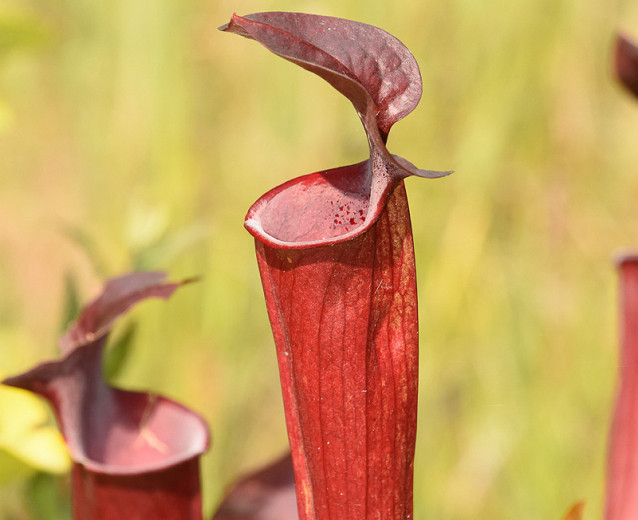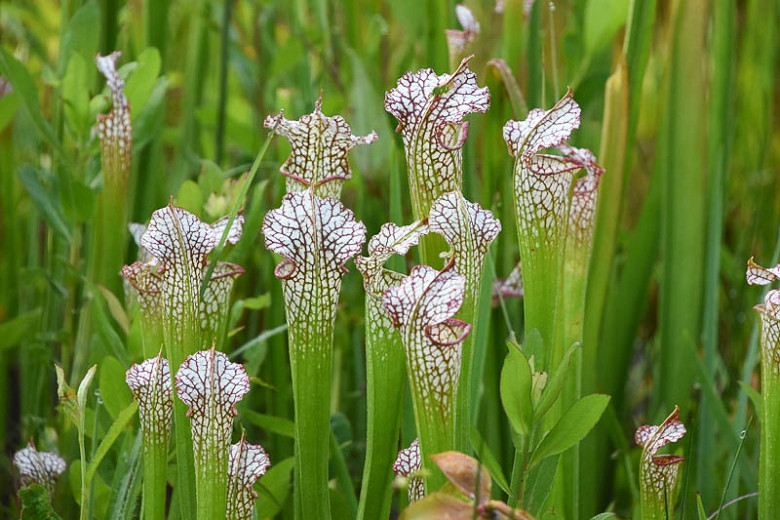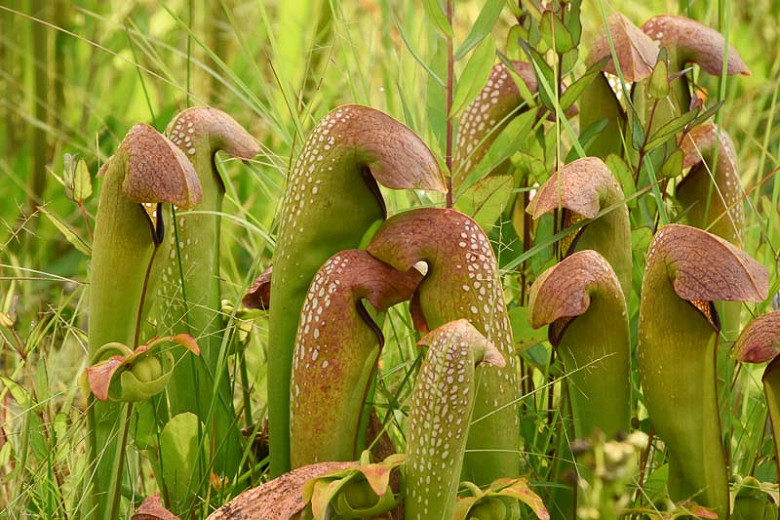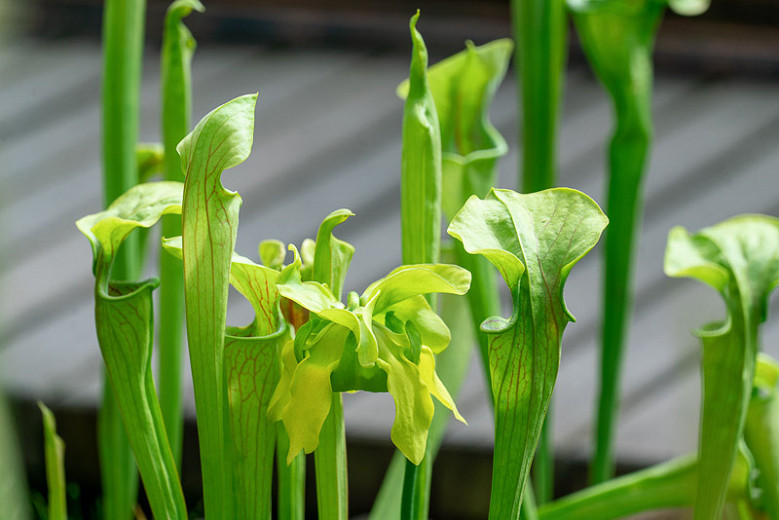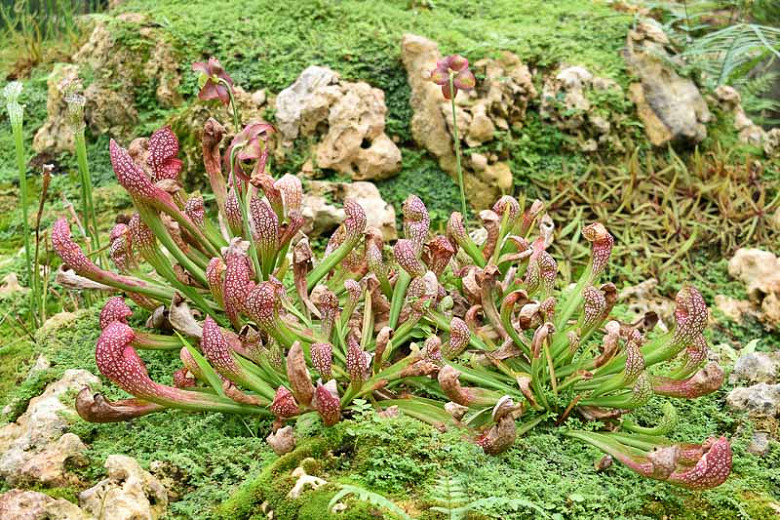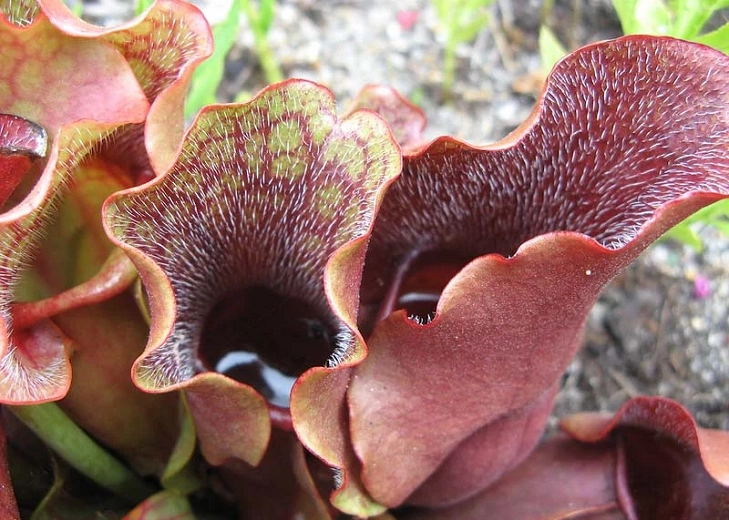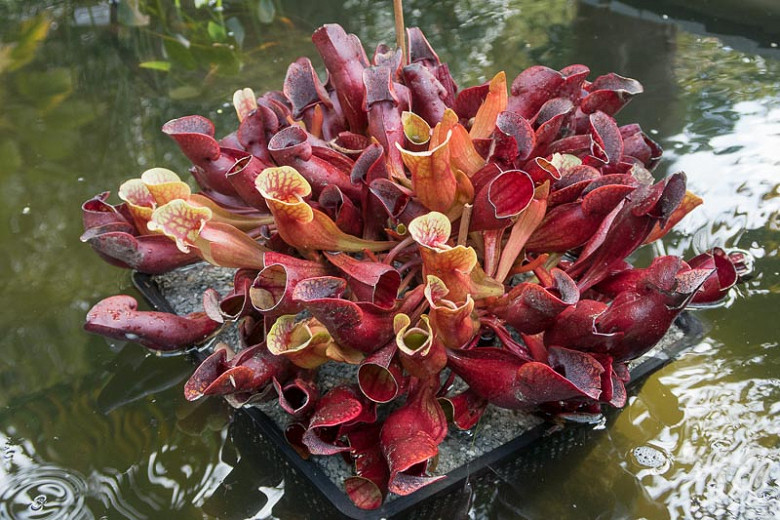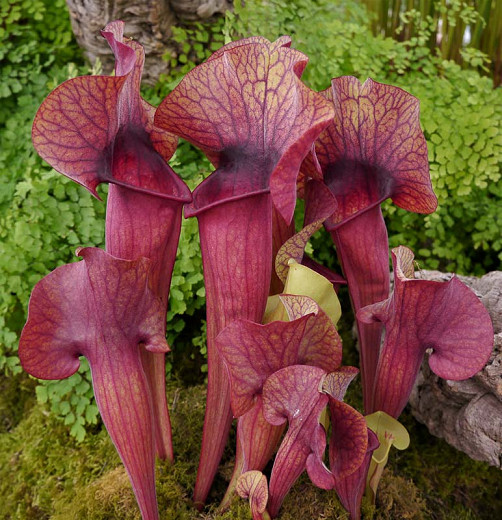Sarracenia rubra (Sweet Pitcher Plant)
Sarracenia rubra (Sweet Pitcher Plant) is a carnivorous perennial prized for its upright, slender pitchers with erect lids, and dangling dark red flowers. The pitchers are usually green with variable amounts of copper to red veining. The red hood is twice as long as it is wide and grows close to the pitcher opening. In spring, before the pitchers fully develop, small, red, sweetly fragrant flowers rise singly atop leafless stalks to about the same height as a mature pitcher. New pitcher leaves appear in spring and summer replacing old leaves that die and fall off. In order to obtain the intense red coloration, this plant needs a great deal of light. Sarracenia rubra is native to mucky soils of sunny bogs, swamps, and streambanks scattered in the southeastern U. S. from North Carolina to Mississippi. The Pitcher Plant is very effective at trapping and killing insects. Lured by the attractive leaf color, insects that land on the lids get paralyzed by the nectar. They fall down into a digestive fluid at the bottom of the pitcher where they will decompose and nutrients get absorbed. This plant is best grown in the consistently moist soils of a bog garden or in containers. It is a great addition to the neutral to acid water garden.
- Grows up to 12-18 in. tall and wide (30-45 cm).
- Thrives in full sun in consistently moist to wet, acid soil. Irrigate with lime-free water and do not fertilize plantings. Soils must never dry out, but plant crowns should not sit for prolonged periods in water. Mulch with pine needles in winter to protect plants from cold temperatures.
- Generally disease free. Keep an eye out for scale insects, mealybugs, aphids, and tortrix moths.
- Propagate by seed, but the plant will not flower for the first 4-5 years. Easiest propagation is by rhizome division.
- Native to the southeastern United States.
Requirements
| Hardiness | 6 – 8 |
|---|---|
| Plant Type | Perennials |
| Plant Family | Sarracenia – Pitcher Plants |
| Exposure | Full Sun |
| Season of Interest | Spring (Mid,Late)Summer (Early,Mid,Late) |
| Height | 1' – 2' (30cm – 60cm) |
| Spread | 1' – 2' (30cm – 60cm) |
| Spacing | 12″ – 18″ (30cm – 45cm) |
| Water Needs | Average, High |
| Maintenance | High |
| Soil Type | Loam |
| Soil pH | Acid |
| Soil Drainage | Moist but Well-Drained, Poorly Drained |
| Characteristics | Fragrant, Showy, Semi-Evergreen |
| Native Plants | United States, Southeast, Alabama, Florida, Mississippi |
| Tolerance | Wet Soil |
| Garden Uses | Bog Gardens, Ponds and Streams, Rain Gardens |
| Garden Styles | Prairie and Meadow |
